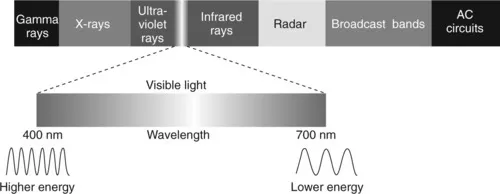
This is a test
- 246 pages
- English
- ePUB (mobile friendly)
- Available on iOS & Android
eBook - ePub
Total Colour Management in Textiles
Book details
Book preview
Table of contents
Citations
About This Book
Managing colour from the design stage to the finished product can be a difficult activity as colour perception is subjective and can therefore be inconsistent. Total colour management in textiles covers all aspects of managing colour from the design stage to the final product, ensuring that the designer's vision is fulfilled in the finished colour. There have been many new developments in the area of colour measurement and colour perception which are discussed. These include discussion of the sensory effect of colour for design and use in product development, and digital colour simulation.
- Concentrates on managing colour from the design stage to the finished product
- Provides a comprehensive discussion on the many aspects of textile colour management
- Written with an industrial applications viewpoint
Frequently asked questions
At the moment all of our mobile-responsive ePub books are available to download via the app. Most of our PDFs are also available to download and we're working on making the final remaining ones downloadable now. Learn more here.
Both plans give you full access to the library and all of Perlego’s features. The only differences are the price and subscription period: With the annual plan you’ll save around 30% compared to 12 months on the monthly plan.
We are an online textbook subscription service, where you can get access to an entire online library for less than the price of a single book per month. With over 1 million books across 1000+ topics, we’ve got you covered! Learn more here.
Look out for the read-aloud symbol on your next book to see if you can listen to it. The read-aloud tool reads text aloud for you, highlighting the text as it is being read. You can pause it, speed it up and slow it down. Learn more here.
Yes, you can access Total Colour Management in Textiles by John H Xin in PDF and/or ePUB format, as well as other popular books in Technik & Maschinenbau & Werkstoffwissenschaft. We have over one million books available in our catalogue for you to explore.
Information
Subtopic
WerkstoffwissenschaftPart I
Measuring colour
1
Colour perception
S. Westland; V. Cheung University of Leeds, UK
1.1 Introduction
Colour exists only in the mind; it is a perceptual response to light that enters the eye either directly from self-luminous light sources or, indirectly, from light reflected by illuminated objects. The nature of light and the spectral reflectance properties of objects are therefore described in the first part of this chapter. The second part of the chapter is concerned with the physiology and functional properties of the retina in the human eye. Light that enters the eye is sampled by three classes of light-sensitive cells in the retina known as cones. In order to understand colour, it is necessary to appreciate that the effective spectral sensitivities of these cones are not static; rather, they change with the illumination conditions and the responses of spatially neighbouring cells, to name but two factors. Furthermore, the three classes of signals from the cones are processed by the neural pathways that lead from the retina to various areas of the cortex in the brain. Although our understanding of colour processing in the human visual system is sufficient to allow us to predict when two spectrally dissimilar objects will be a visual match, it does not allow us to make reliable predictions of colour appearance. In this chapter, three current problems for the science of colour vision are described: colour contrast, colour constancy and colour appearance.
1.2 The nature of colour
Light is a form of energy. Specifically, it is that part of the spectrum of electromagnetic radiation that our eyes are sensitive to. Radio waves and X-rays, as well as ultraviolet and infrared radiation, are all part of the spectrum of electromagnetic radiation but the human visual system is only capable of sensing a very narrow band of wavelengths in the approximate range 360–780 nm (a nanometer is 10− 9 metres). The light from any source can be usefully described in terms of the relative power emitted at each wavelength in the visible spectrum. Figure 1.1 shows the wavelengths of the visible spectrum and the colours with which we normally associate the wavelengths. However, Newton was famously aware that ‘the rays are not coloured’. By this phrase Newton meant that light is not intrinsically coloured; short-wave light, for example, has no intrinsic property by which it is blue but, rather, it may induce in us the sensation of blueness. Under some circumstances, however, short-wave light may appear black or some colour other than blue. It is therefore clear that colour cannot be understood without a study of the properties of the human visual system, since colour exists only in the brain.

1.1 The electromagnetic spectrum. Only radiation in the range 360–780 nm is visible to the human eye.
The spectral power distribution of daylight varies with geographical position, atmospheric conditions, and with the time of day and year but the set of daylight power distributions is very similar to that emitted by a blackbody1 heated at different temperatures (Judd et al., 1964). For many light sources it is useful to refer to the temperature (usually expressed in Kelvin) of the blackbody whose radiation most closely resembles that of the light source. This temperature is called the correlated colour temperature (Sinclair, 1997). The radiation of north sky daylight on a cloudy day has a correlated colour temperature of about 6500 K, whereas the light from a tungsten filament bulb has relatively more power at the long wavelengths, which gives it a much lower correlated colour temperature.
1.3 The physical basis of colour
When light strikes an object, some light is always reflected from the surface, at the boundary between the object and air, because of the change in refractive index as the light passes from air to a more dense medium. This surface reflectance has the same relative spectral power distribution as the illumi nating source and may be diffuse or specular in nature. Diffuse reflectance, where the light is dispersed in many different directions, occurs when the surface is rough, whereas smooth glass-like surfaces give rise to specular surface reflectance where the angle of reflection is equal to (but with opposite sign) the angle of incidence of the illumination. The light that is not reflected at the surface enters the body of the object, where further interactions take place. If the material is transparent, some light will pass through the material and emerge at the other side. The most common processes that reduce transparency are absorption and scattering. Absorption is a process whereby light is removed by an interaction with the molecules of the object at an electronic level. Most objects are coloured because this absorption process is more efficient at certain wavelengths than at others, in a way that depends upon the properties of the molecules (Zollinger, 1999). Scattering is a kind of reflection that occurs when particles (or air bubbles) are present in the material. The amount and directional nature of the scattering depends upon the size of the particles and their refractive indices (relative to the medium in which they are contained). Many opaque (non-transparent) white materials are manufactured by adding particles of a white pigment such as titanium dioxide, which has a particularly high refractive index. Translucency is a visual phenomenon that can give materials a milky or cloudy appearance and occurs when the material is partially transparent but exhibits scattering. Further details about the physics of light and its interaction with materials is provided by Nassau (1983) and Tilley (2000) or, for an explanation at the level of quantum electrodynamics, Feynman (1990).
The proportion of light reflected by a sample can be measured using a reflectance spectrophotometer and represents the (physical) colour fingerprint of the sample. A spectrophotometer typically measures the proportion (sometimes expressed as a percentage) of light reflected by the object at each of several equally spaced wavelength intervals. Commercially available instrum...
Table of contents
- Cover image
- Title page
- Table of Contents
- Copyright page
- Contributor contact details
- Introduction
- Part I: Measuring colour
- Part II: Managing colour
- Index